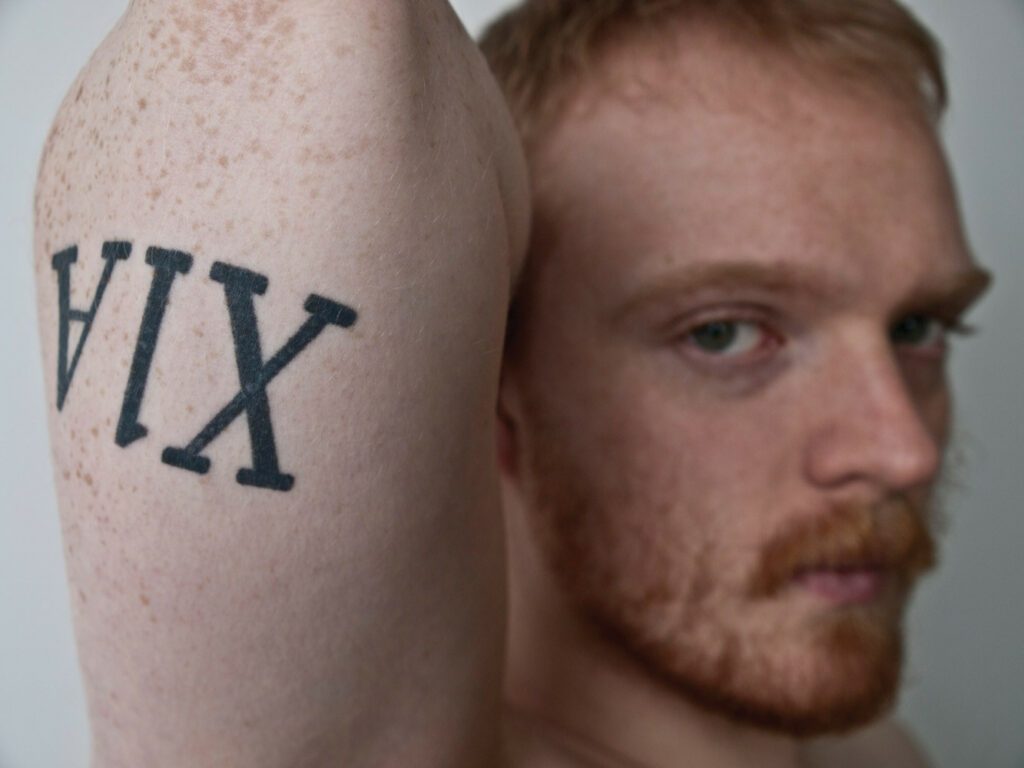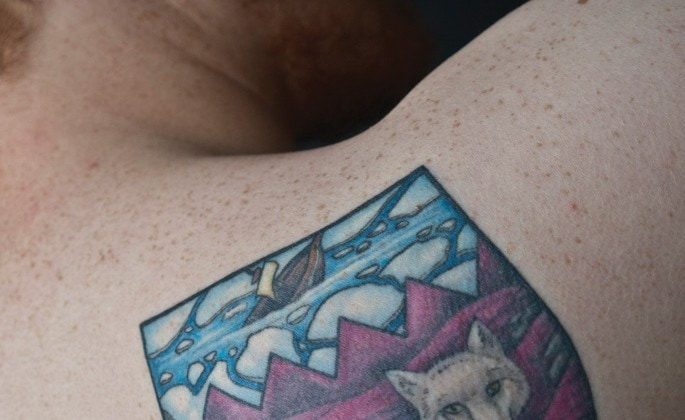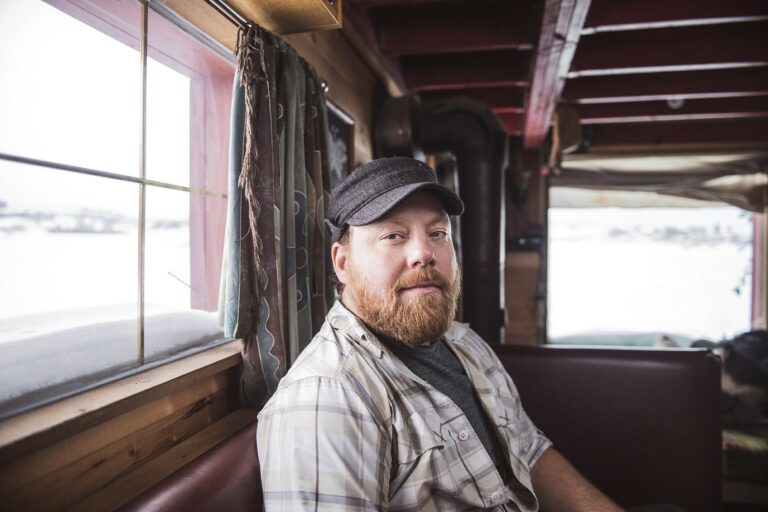People who live in the North, whether for two years or 30, tend to have a fierce loyalty to the place. Even if they leave, they often don’t want to let it go – it lingers in their bones. Many of these people choose to declare their loyalty with a permanent mark on their skin.
Ravens, northern lights, airplanes, inuksuit, bears – these are among the most popular tattoos around town. There are also plenty of XIAs and 867s, and there are likely a few YZFs too.
Dennis No Body, who prefers an old nickname to his real last name, worked as a tattoo artist in Vancouver for 20 years and recently relocated to Yellowknife. He tattoos at the Shirt Shack downtown on Franklin Avenue. No Body says Yellowknife is a bit conservative, so tattoos aren’t as common here as they are in some places down south. He guesses another reason for that is, a few years ago, tattoo artists in town left some people with less-than-satisfactory results.
“It’s like having your first boyfriend be really sh*$#y to you,” he says. “The next guy who comes along – you might give him a chance, but you’re a whole lot more careful.”
But No Body adds that Yellowknifers are open-minded. Body art is becoming more common, and people tend to get unique tattoos.
“In more of an urban centre you get people who are getting tattooed for the sake of getting tattooed. When I lived in Vancouver, I did 50 million nautical stars and 50 million sparrows and you know, none of them were sailors – they were dudes in really tight pants wearing makeup,” he says. “Northern people are more apt to get tattoos representative of their lifestyle, where they live.”
In Cleo Stinson’s case, that couldn’t be closer to the truth. Stinson grew up in Inuvik and Yellowknife, spending her days on the frozen lakes and paths of the North running her parents’ dog team. A few years ago, Stinson and her two sisters decided to get matching tattoos of a dog sled team with three dogs (they were only able to keep three of their sled dogs when they moved to Yellowknife).
“I think it was really special and it’s nice to have a connection to your roots. And as you grow up, you go south for work or whatever, but you have this memory on you forever,” she says.
The sisters got the tattoos in a Ted Harrison style after growing up around the Yukon artist’s playful images. Stinson also has a pine tree on her back. It’s a skinny, short northern pine – the kind that juts improbably out of the Canadian Shield.
“It’s just, like, home,” she explains. “It sounds so corny – like ‘oh, I love Yellowknife!’ But it’s true and it’s what I’ve been around all my life.”
Tim Edwards, a born-and-raised Yellowknifer, decided to commemorate his hometown and home territory. Edwards describes his X1A tattoo (the first three digits of Yellowknife’s postal code) as a rallying cry for his city. “You know, at the end of the night with friends, you’re doing a shot, you yell out X1A.”


Edwards also has a northern sun on his chest and the Northwest Territories coat of arms on his back. The coat of arms has an Arctic fox, a ship representing the Erebus and the Terror, tundra, boreal forest and the Northwest Passage. He says the reason for his tattoos is simple – he loves being able to call such a mysterious and unique place home.
“There’s a certain elitism that comes with being from Yellowknife and it’s a good and a bad thing. But it’s always something I carry around with me.”
While he wasn’t born here, Bob Kussy has lived in Yellowknife for almost 30 years. On his shoulder, the artist has a tattoo of a whalebone owl carving. It’s a symbol of his life and his passion.
“I gotta get in a boat in the Arctic Ocean with my polar gear on, get off somewhere with a backpack and a gun and hope I don’t run into a polar bear, find s$#t to carve, all in the hopes that I will have a successful year to come,” he says.
Kussy says his few run-ins with polar bears on Baffin Island are just as harrowing as his boat rides in the ocean — jostling in small boats on rough water, and passing by giant icebergs the size of the NorthwesTel building.
“It’s like Titanic and I’m in a row boat,” he says.
Greyson Gritt didn’t grow up in Yellowknife either, but it’s the place the well-known singer-songwriter has lived the longest as an adult. Gritt has several tattoos, and a few are related to time spent in the North. There is, once again, some Ted Harrison-inspired art – a group of ravens on Gritt’s forearm were taken from one of the author’s children’s books.
Gritt also has a complex upper arm scene describing the journey north – a 1964 Ford truck winds down a road, which is also the shape of a record. Mountains and pine trees form the background. The truck is also a symbol for Gritt’s 1964 Harmony Rocket guitar.
The musician gets tattoos whenever something major happens, and a lot has happened in Yellowknife. “There’s all these very significant things and emotional things, so for me it makes total sense, like telling myself, ‘remember this.’”
Gritt adds that no one really bats an eyelash at multiple piercings and tattoos. “Here in Yellowknife it just seems like you don’t need to hide.”
When the tattoo ink sinks into the skin, it’s there to stay. Body art tells a story about a person, their experiences, their life. Dennis No Body says people get tattoos for all kinds of reasons, but the permanence is perhaps the most significant.
“The bottom line is, it’s the only thing you get to take with you to the grave.”







